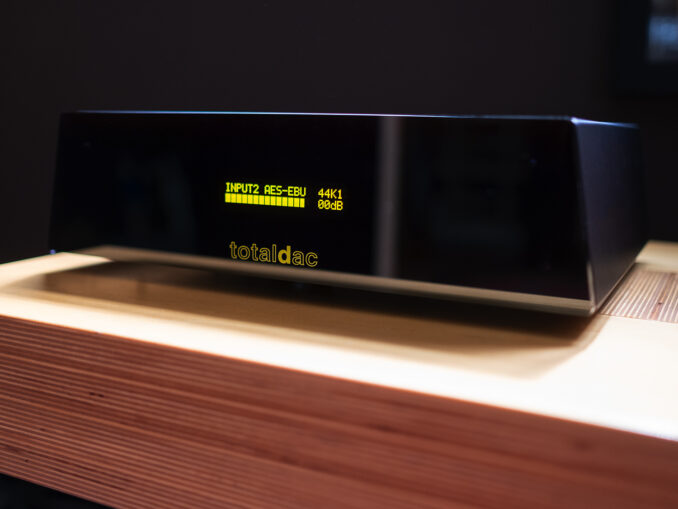
“Now, I’m not one to stand on ceremony or suggest that a given technology is inherently superior to another—it’s all in the implementation…”
“…I’m essentially a listener and the D1-Dual DAC is one of the finest sounding DACs I’ve had the pleasure to live with and listen to.”
That’s how I started my review of the totaldac d1-dual DAC, written for AudioStream in September 2013. Since that time I’ve reviewed a number of totaldacs including the d1-tube-MKII, d1-integral, d1-six, d1-seven, d1-tube DAC/Streamer (review), and d1-unity (review) and I’ve owned one totaldac or another since 2015. The d1-unity has been mine since I reviewed it last April, replacing the d1-tube DAC/Streamer. All to say I know my way around a totaldac as well as I know every pothole on the private dirt with a smattering of gravel road that leads to our home and the Barn. Which is to say, well.

Every totaldac relies on a network of resistors to convert binary data—digital’s abstracted 0s and 1s—to voltages requiring two values—R or 2R. Vincent Brient, Mr. totaldac, uses ‘naked’ Vishay Precision Group’s 0.01%-tolerance VAR-series Bulk Metal Foil resistors to perform this function and the number of resistors employed is the main difference between the Barn resident d1-unity and the d1-triunity under review—the d1-unity houses 100 while the d1-triunity ups that number to 300. More resistors, one could assume, equals greater accuracy and totaldac also offers the 4-box d1-sublime that ups the resistor count to 600.

Every totaldac also employs an FPGA that performs a number of functions including buffering incoming data to reduce jitter, implementing its digital volume control, as well as a user defeatable finite impulse response (FIR) compensation filter that gently boosts the DACs high frequency response to compensate for the treble ‘dip’ inherent in non-oversampling DACs. Another option available using the included remote is EARTH. I’ll let totaldac explain: when “CONNECTED” is selected the signal ground is connected to the earth. When “UNCONNECTED” is selected the signal ground and the earth are isolated. Vincent recommends picking which ever sounds best, sage advice indeed, and in my situation “Unconnected” was the winner. Your ground and sound may vary.
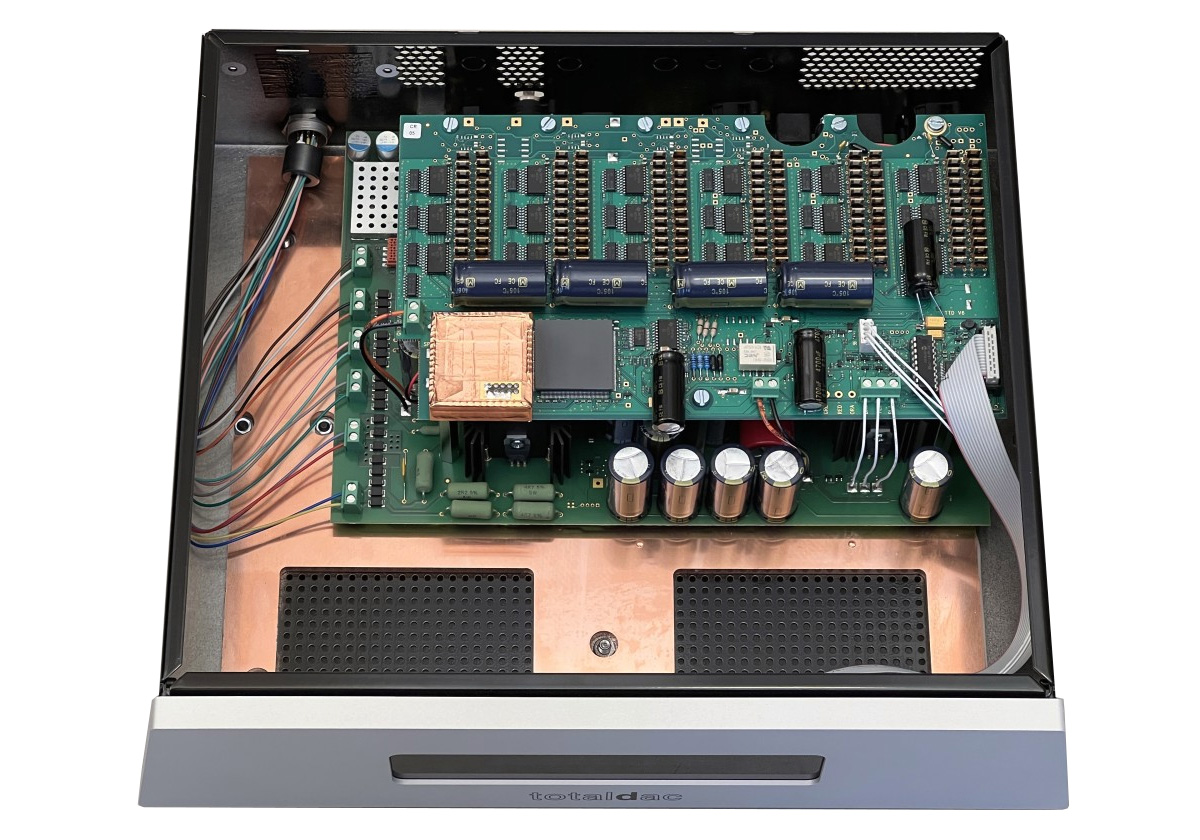
The “Unity” series was introduced in January of 2023 and incorporates a number of changes which I’ll let totaldac explain:
The “unity” architecture allows a better clock distribution, a lower jitter, a lower R2R power supply rail impedance and a lower noise in the digital section.
The output stage is also fully new, in term of components and in term of schematics, and using discrete components exclusively. This new output stage produced a 3.5V unbalanced signal and a 7V balanced signal with low impedance for the best versatility, to be connected to all preamps, all integrated amps and also directly to all power amps.

Two things I’ve learned about totaldacs and me—I prefer the RCA outputs over XLR and I always go with the AES/EBU input. Why? Because I prefer the sound of music using those ins and outs. I also prefer using an integrated amplifier’s or preamplifier’s volume control to the totaldacs own for the same reason and I’ve reviewed and owned a whole bunch of totaldacs in a whole bunch of systems pairing them with the company’s own d1-streamer (review), the Barn resident Auralic ARIES G1.1 (review), the outstanding Grimm MU1 (review) and too many integrated amp/speaker combinations to list.

For this review, the d1-triunity got to play with the Auralic ARIES G1.1 in a number of systems but the main one used for the serious listening consisted largely of mine—the Leben CS600X and DeVore Fidelity O/96 wired with all AudioQuest including the Diamond AES cable, FireBird Interconnects, ThunderBird Zero speaker cables, and Blizzard power cables all plugged into an AQ Niagara 3000. My Box Furniture ‘Fallen A’ rack supported the electronics and I use Roon exclusively for music playback so that’s the case here as well. I’ve read comments about Roon and sound quality which I take about as seriously as UFO sightings.
I bet some of you are wondering if the d1-triunity is better than the d1-unity. Is the extra money, more than 50% more money, worth the squeeze?
I’ll preface the following listening notes with a quote from my review of the totaldac d1-unity where I compared it to the d1-tube DAC/streamer I used to own:
“Listening to “Figure 8” [from FKAtwigs 2015 EP M3LL155X] at copious volume levels, a thrill ride if ever there was one, proved that the d1-unity sounds more dynamic than the d1-tube, with seemingly greater speed and impact in attack combined with clearer and better fleshed out bass. There’s also a clear sense of greater micro- to macro- control when taken in a whole make this music feel more like a giant machine made of infinitesimally small parts and giant cogs all chugging together to form a locomotive of sound energy. Stunning.”
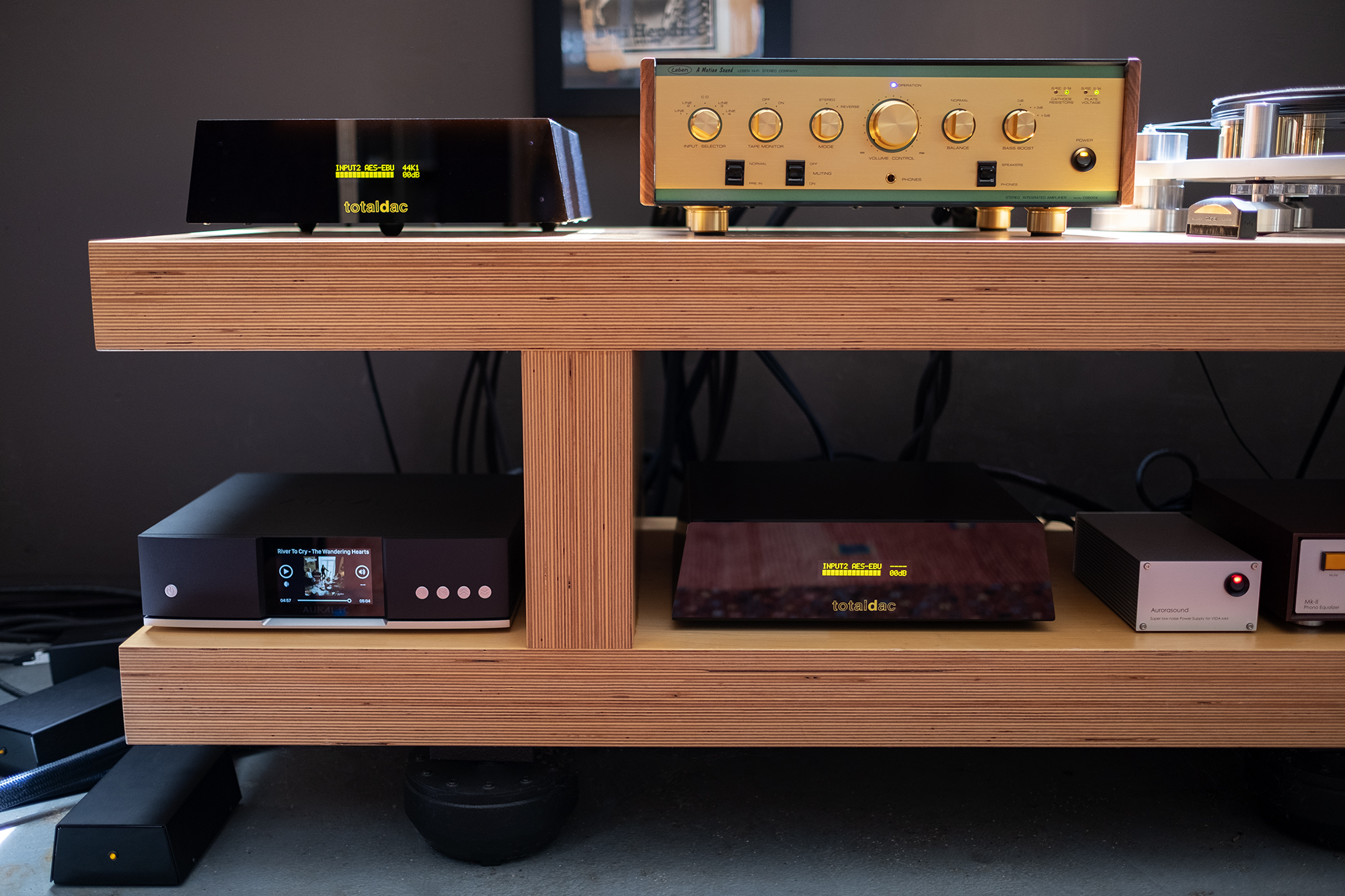
Imagine a DAC with two knobs on its faceplate—one marked “Saturation” and the other “Presence” each going from 1 to 10 with the higher setting delivering more of each. As you dial up “Saturation,” the voice of instruments and vocals sound fuller, richer, and more life-like while dialing in more “Presence” makes these same things sound more refined and more delicate. I doubt anyone, other than self-hating ‘accuracy’ types, would ever dial them down from a perfect 10 where music sounds as colorful, vibrant, and nuanced as real life. I mean, who chooses less when more is clearly better?

I love taking photographs (but I’m no photographer) and I mostly use just one prime lens for everything. It’s the lens I shoot most everything with for TM and it’s the only lens I took to Axpona. But recently I had another lens gathering dust so I decided to trade it in for a macro lens figuring I’d appreciate a macro’s ability to get closer than my everyday prime, offering a better look at details making it useful and fun. And while we’re still getting acquainted, things have worked out exactly that way as a macro lens can get at details that my prime simply can’t. Obvious stuff I know but experientially once we have the ability to get closer we begin to look for details to shoot we never would have with a prime. There’d be no point.

If we add these two paragraphs together, we hopefully begin to get at the differences between the totaldac d1-unity and d1-triunity. While I would not call the comparative performance dramatic in a cartoon hammer over the head bump-raising manner—no jaws hit floors—the improvements brought by the d1-triunity make music sound more vibrant and alive while offering a finer-grained view on aspects of reproduction that make it feel less like a reproduction and more like a production.
Let’s start simple, in an instrument count kinda way, with Eric Dolphy playing “Tenderly” on alto sax all by himself from his album Far Cry with Booker Little from 1960. Beyond Dolpy’s mind blowing mastery, which I never seem to get completely beyond, the d1-triunity offers up a richer, sweeter, fuller sound and a more spacious place compared to the d1-unity. Or to put it in sillier words, Dolphy’s sax sounds more saxy. I’m talking about a subtle but important difference and to answer my own question—is this kind of subtle improvement worth the squeeze—here’s my answer: I’ve never regretted buying something that brings endless joy, extra especially so when that joy is found in listening to music.
The rest of this classic record is obviously just as stunning with help from Ron Carter, Jaki Byard, and Roy Haynes if you enjoy master musicians at the top of their game playing jazz on the verge of free. It’s interesting to note that in free jazz, mastery of the instrument is a prerequisite while in early punk, virtuosity ran nearly antithetical to the ‘cause’ raising the question—what’s freer?
You might think that some music is better viewed with a prime lens, like VR Sex’s Hard Copy, released on DAIS Records in March, that sounds like bits of Joy Division, the Ramones, and Bauhaus boiled down to a rich stew.
From the liner notes:
Hard Copy is the result – 10 tracks of sneering psychedelic punk streaked with Chrome-damaged freak-outs and snotty power pop harmonies chronicling sex doll love affairs and glue-sniffing fatales.
You might think this music is the kind that wants to be reproduced poorly with more obfuscating warmth and extra fat tone but in my opinion, you’d be wrong. The d1-triunity makes Noel Skum (Andrew Clinco of Drab Majesty) on guitars and vocals, Z. Baron (Aaron Montaigne of Antioch Arrow/Heroin/DBC), Mike X (Mike Kriebel), Chane Wallet (Marley Jones), and Dr. Clown (Emmet Kelly) sound more fully fleshed out, more completely formed and therefore more compelling as compared to the d1-unity’s slightly less refined sound. This is hard driving near manic punk and the d1-triunity delivers all of the crunch and munch with scintillating tone, texture, and menace.
Confession—I cannot stop listening to Adrianne Lenker’s Bright Future, released last month on 4AD. I had it playing in my hotel room every night after the long days of Axpona, on the flight home, and in Barn at least once a day since. There’s an infectious energy, a joyous lightness, a skip in its step even when dealing with not so light subjects that makes me feel…better. When listening to Bright Future I want to climb inside and feel Lenker’s warm soothing voice, guitar, and those harmonies—oh those harmonies on “No Machine”—as if there’s nothing separating us but air. And the totaldac d1-triunity delivers on this desire, bringing full voice as richly and finely textured as the real thing right into the Barn for me to revel within. Here, digging deeply into this now very familiar music is where the d1-triunity’s perfectly silent silences become more evident, allowing music to unfold and reform in space as a solid dimensional apparition without even a hint of waver, extraneous noise, or masking of even the finest details at play. Rich and rewarding.
Speaking of supreme beauty, Shabaka’s Perceive Its Beauty, Acknowledge Its Grace, released on Verve earlier this month, is a study in meditative pace and quiet. Featuring a total of 24 musicians including Andrè 3000, Floating Points, and Laraaji—a veritable who’s who of contemporary ‘spiritual jazz’— Perceive Its Beauty offers 46 minutes of mostly acoustic music that lives, breaths, and inspires with interplay, ticking along like some clock free from time and it’s in these quieter, delicate moments that the d1-triunity really shines. The silence between the notes translates here as the spirit between the notes, with every moment ripe and rich and rewarding. With the d1-triunity in my system with the Leben driving the DeVore’s, I could listen in as closely and fully as volume and proximity allowed, finding myself sliding forward and leaning in to become more fully immersed.
When digital replay, or any kind of replay, gets this good it’s as if you can hear around the notes, as if it’s perfectly natural to understand that what you’re hearing is made by things and people that have dimensional form that contributes to the sound of music as opposed to facsimiles thereof that feel as if music, notes and sounds, are being propelled into space like pennies bouncing off cardboard.
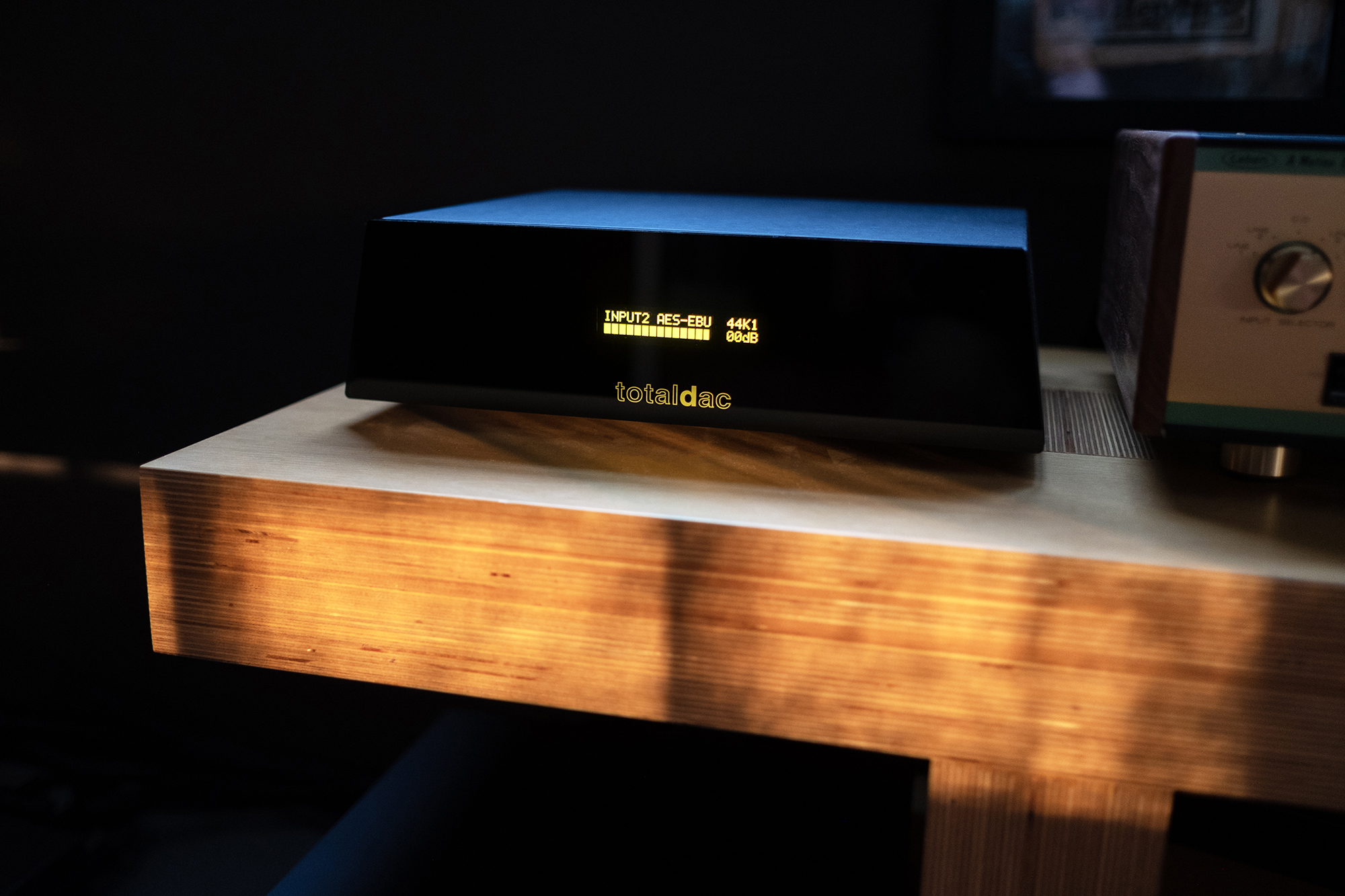
As far as comparisons to other DACs go, the d1-triunity clocks in at about $23.5k which is $6k more than the recently reviewed Grimm MU2 Music Player (review) that acts as a Roon Server, streamer, DAC, and analog preamp. Here’s what I said about the MU2 in that review, “From the most dense electronic mass of sound to solo piano and everything in between, the Grimm MU2 pulled out the richest and most fully resolved sounds of music I’ve had the pleasure to live with.” My preference as a hypothetical consumer with this kind of money to spend leans toward the Grimm MU2 as I prefer a simple(r) solution even more so when it sounds better than separates.
It’s also well worth noting that every DAC’s output is influenced, more or less, by its input. While the Auralic ARIES G1.1 is a great streamer especially so when its price is taken into account, the Grimm MU1 is the finest server/streamer I’ve auditioned and it upped the performance of my d1-unity by an easy to hear and feel margin.
From my MU1 review:
“One of the aspects of the totaldac’s way with music that I find out of the ordinary, i.e. extraordinary, is it reproduces the voice of things—people, instruments, electronics, etc.—with seemingly full color and full resolution in perfect balance, which is a rare double feature in DACs in my experience. With the MU1 feeding the d1-unity in this Soulution/Rockport system, the totaldac’s strengths were magnified, sounding as if the music dancing into the Barn had been purified.”
All to say that I’m certain that the d1-triunity’s performance can be upgraded as well if paired with a server/streamer as good as the MU1. Of course this adds additional cost but if ultimate performance is the goal, “Speed’s just a question of money. How fast you wanna go?”
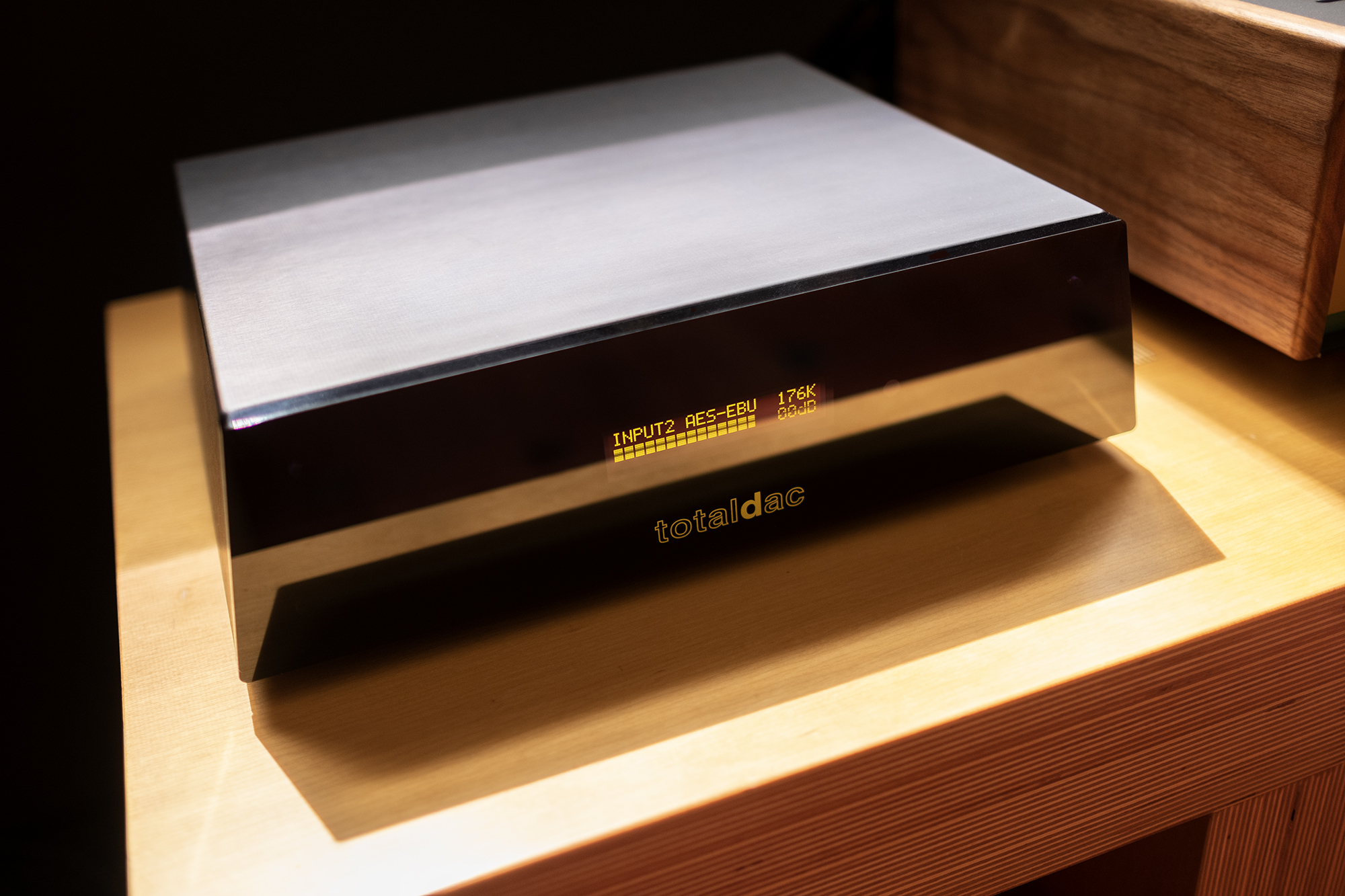
In my experience that reaches back over a decade and many totaldacs both reviewed and owned, each new iteration adds more refinement as is the case when moving up the totaldac lineup. The d1-triunity is a subtle but clear improvement over the d1-unity offering a more lifelike and fine grained view onto and into music, bringing the performance to your home in exquisite living color.
totaldac d1-triunity DAC
Price: 24000euros incl VAT in Europe, 22000euros excl VAT out of Europe (about $23,500 USD)
Company Website: totaldac
Specifications
- 192KHz asynchronous Xmos USB, 192KHz coax RCA, 192KHz AES-EBU, 96KHz optical, selected from a remote control.
- 44.1KHz, 48KHz, 88.2KHz, 96KHz, 176.4KHz and 192KHz, 16 to 24 bit formats supported.
- as an option, DSD (DoP standard) supported on coax, AES-EBU and USB inputs.
- embedded custom clock with anti-jitter FIFO memory.
- 3.5Vrms max RCA, 7Vrms max XLR analog output.
- volume control, adjusted by a remote control and an OLED display, works for all inputs.
- phase polarity selected by remote control.
- non-oversampling DAC compensation filter activated or disactivated by remote control.
- display switched off by remote control.
- R2R DAC technology using 300 pieces of 0.01% VAR Bulk Metal® Foil resistors Vishay Foil Resistors.
- class A discrete transistor output stage.
- external power supply to minimize the noise on the embedded preamp.
- aluminium and PMMA enclosure with massive pure copper antivibration plate.
- power consumption 14.2W @44.1KHz, 16.5W @192KHz.
- DAC dimensions: height 110mm, width 360mm, depth 290mm.
- power supply dimensions: height 65mm, width 122mm, depth 180mm.
- weight: 7kg.


